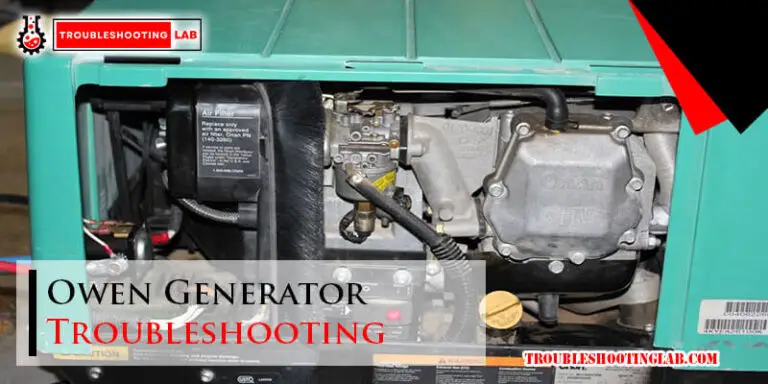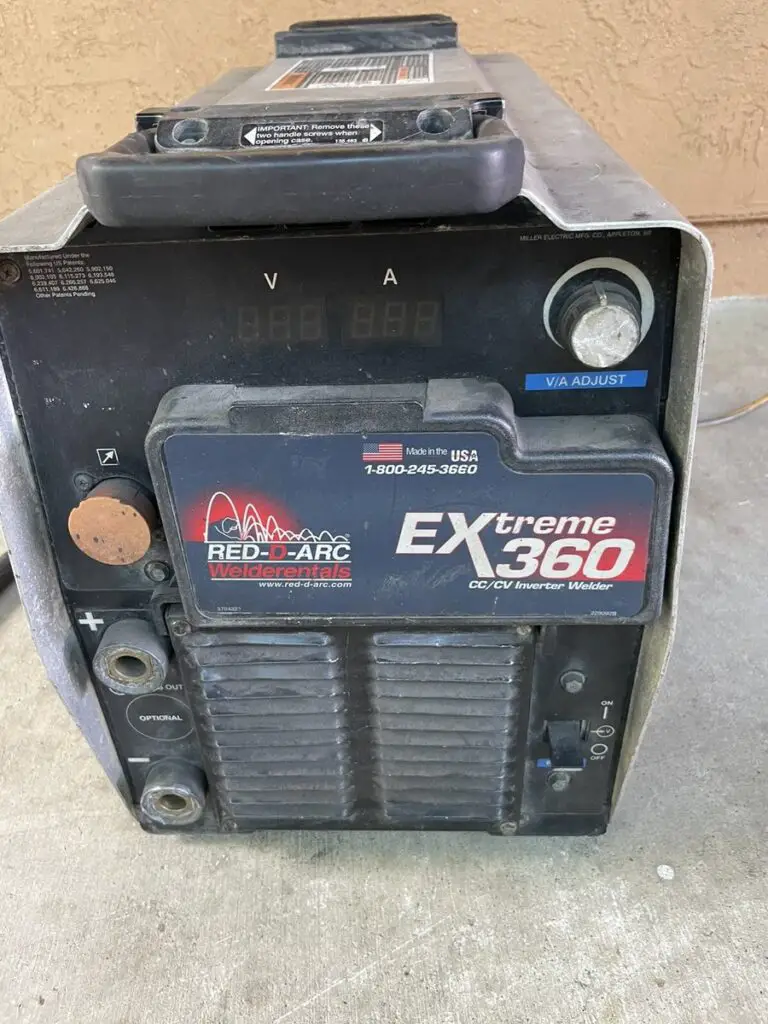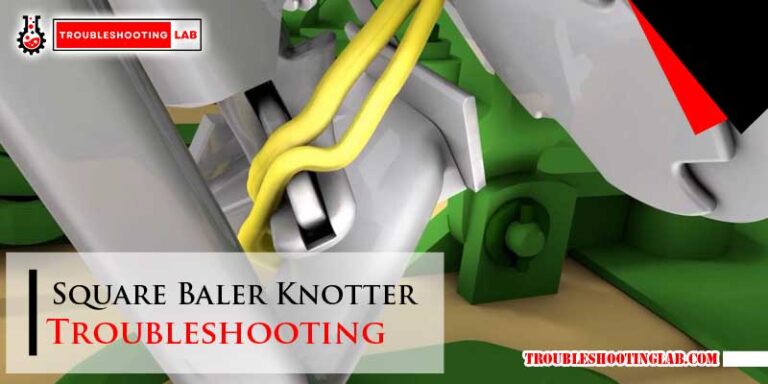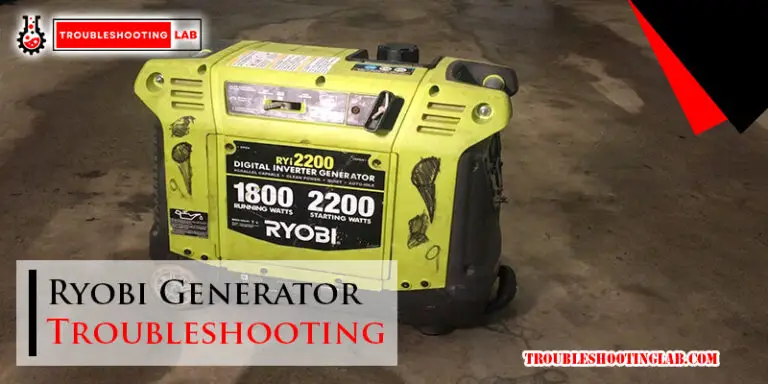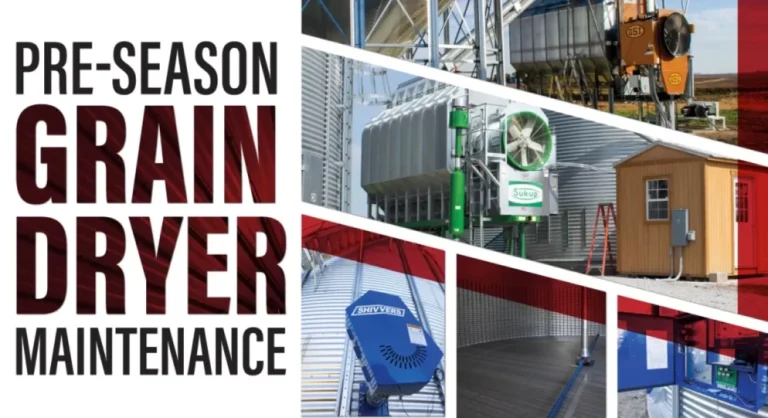Campbell Hausfeld Air Compressor Troubleshooting: Quick Fixes
Is your Campbell Hausfeld air compressor giving you trouble? Don’t worry—you’re not alone.
Whether it’s refusing to start, making strange noises, or not delivering the power you need, these machines can occasionally act up. The good news? Most issues can be fixed with a little guidance, saving you time, money, and frustration. In this guide, you’ll learn simple, step-by-step troubleshooting tips to get your air compressor running like new again.
No complicated jargon, no guesswork—just clear solutions to the problems you’re facing. Stick with us, and by the end of this article, you’ll feel confident tackling those compressor headaches. Let’s get started!
Common Compressor Problems
Owning a Campbell Hausfeld air compressor can make your projects smoother, whether you’re inflating tires, painting, or powering tools. But like any machine, it can run into issues that slow you down. Understanding common compressor problems and how to fix them will save you time and frustration.
Compressor Won’t Start
Nothing’s more frustrating than a compressor that refuses to start. First, check if it’s plugged in securely and if the power outlet is working. A tripped circuit breaker or a blown fuse could also be the culprit.
If the power supply checks out, inspect the pressure switch. Sometimes, the switch may fail to signal the motor to start. Replace it if necessary. Finally, ensure the compressor’s reset button hasn’t popped out—press it back in if it has.
Low Pressure Output
Low pressure can make your tools ineffective. Start by checking for air leaks. Listen closely for hissing sounds around hoses, fittings, or the tank itself.
Dirty air filters can also restrict airflow. Remove and clean the filter or replace it if it looks too clogged. Another issue might be worn-out piston rings, which reduce compression. If that’s the case, you may need professional assistance.
Overheating Issues
An overheating compressor can shut down unexpectedly, delaying your work. Poor ventilation could be the problem. Make sure the compressor is in a well-ventilated area and away from walls or heat sources.
Frequent use without breaks can overwork the motor. Give your compressor some time to cool down between tasks. If the problem persists, the motor or pump oil levels might be too low—check and top them off as needed.
Unusual Noises During Operation
Odd noises can be alarming and often signal underlying issues. Rattling sounds might indicate loose components. Tighten bolts and fittings to secure everything in place.
Grinding noises could mean the bearings or motor are failing. In this case, avoid continued use and have the unit inspected. A knocking sound, on the other hand, might point to a failing piston or crankshaft, which would require professional repair.
Have you experienced any of these problems with your Campbell Hausfeld air compressor? Taking a few minutes to inspect and troubleshoot can often save you from costly repairs or replacement. What steps will you try first?

Credit: www.aircompressorsdirect.com
Inspecting Electrical Components
Electrical issues are common in air compressors, including Campbell Hausfeld models. Regular checks ensure smooth operation and prevent downtime. Faulty components can lead to poor performance or a complete shutdown. Inspecting the electrical parts is key to troubleshooting efficiently. Focus on three main areas: the power supply, motor overload switch, and pressure switch.
Checking The Power Supply
Start by verifying the power source. Ensure the compressor is plugged into an outlet. Check if the outlet provides the correct voltage for your model. Use a multimeter to confirm voltage consistency. A weak or faulty power supply can hinder compressor functionality.
Resetting The Motor Overload Switch
The motor overload switch protects the compressor from overheating. Locate the switch near the motor housing. Press the reset button firmly to reactivate the switch. Wait a few seconds before restarting the compressor. This simple step often resolves motor-related issues.
Testing The Pressure Switch
The pressure switch controls air pressure levels inside the tank. Turn off the compressor before inspecting the switch. Remove the cover and look for signs of damage or loose connections. Use a multimeter to test the switch’s electrical continuity. Replace the switch if it fails the test.
Fixing Air Leaks
Air leaks in your Campbell Hausfeld air compressor can reduce its efficiency and increase energy costs. Fixing these leaks is essential to maintain optimal performance. Let’s walk through the steps to identify and resolve air leaks effectively.
Identifying Leak Locations
Start by turning on your compressor and allowing it to pressurize. Listen closely for any hissing sounds, which often indicate a leak. You can also use a simple soap-and-water solution—apply it to fittings and connections, and watch for bubbles forming.
Pay special attention to areas like hose connections, pressure switches, and the drain valve. These spots are common culprits for leaks. Don’t rush this step—finding the exact location is crucial before moving on to repairs.
Tightening Loose Fittings
Loose fittings are a frequent cause of air leaks. Use a wrench to carefully tighten any fittings you suspect might be leaking. Be cautious not to overtighten, as this could damage threads or seals.
If tightening doesn’t stop the leak, inspect the threads for wear or damage. In some cases, applying thread seal tape (also known as Teflon tape) can help create a better seal. Wrap the tape clockwise around the threads before reconnecting the fitting.
Replacing Worn Gaskets And Seals
Gaskets and seals can deteriorate over time, especially with frequent use. If you notice leaks around the pump head or other sealed areas, it’s likely due to worn gaskets or seals. Replacing them is straightforward and can make a big difference.
Check your owner’s manual to find the correct replacement parts for your model. Once you have the parts, disconnect the compressor from power, remove the damaged gasket or seal, and install the new one. Ensure everything is aligned properly before reassembling.
Have you ever fixed an air leak only to find another one soon after? Regular maintenance can prevent this. Inspect your compressor periodically and address minor issues before they escalate.
Addressing Pressure Problems
Pressure problems can disrupt the performance of your Campbell Hausfeld air compressor. Low or inconsistent pressure often points to specific components needing attention. Identifying and fixing these issues ensures the compressor works efficiently. Below are common areas to inspect and address.
Cleaning Or Replacing The Air Filter
A clogged air filter restricts airflow, reducing pressure output. Remove the air filter and inspect it for dirt or debris. If it looks dirty, clean it using compressed air or wash it with soapy water. Allow it to dry completely before reinstalling. Replace the filter if it’s too worn or damaged. Regular maintenance of the air filter improves pressure consistency and extends the compressor’s life.
Adjusting The Pressure Regulator
The pressure regulator controls the output pressure of the air compressor. Turn the regulator knob clockwise to increase pressure or counterclockwise to reduce it. Check the pressure gauge to ensure the desired level is reached. If the regulator does not respond, it may be faulty and require replacement. Proper adjustment ensures the compressor operates at optimal pressure for your tools.
Inspecting The Check Valve
The check valve prevents air from flowing back into the pump. A faulty check valve can cause pressure drops or prevent the compressor from building pressure. To inspect it, disconnect the compressor from power and release all air pressure. Remove the valve and check for blockages or damage. Clean it thoroughly or replace it if necessary. A functioning check valve maintains consistent pressure levels.
Resolving Oil-related Issues
Dealing with oil-related issues in your Campbell Hausfeld air compressor can feel intimidating, but it’s a manageable task when broken down into simple steps. Whether it’s checking oil levels, changing the oil, or tackling oil leaks, these practical tips will keep your compressor running smoothly. Let’s get straight into it so you can fix the problem and get back to work!
Checking Oil Levels
Is your compressor struggling to perform? Low oil levels could be the culprit. Start by locating the oil sight glass or dipstick on your compressor.
Make sure the compressor is off and cool before you check. If the oil level is below the recommended mark, it’s time to add more.
Use the manufacturer-recommended oil to avoid damage. A quick check can save you from costly repairs down the line.
Changing The Compressor Oil
Old, dirty oil can wreak havoc on your compressor’s performance. Changing the oil isn’t hard, but it’s crucial for keeping your machine in top shape.
Turn off the compressor and let it cool completely. Locate the drain plug and place a container underneath to catch the old oil.
After draining, replace the plug and pour in fresh oil up to the recommended level. You’ll notice a smoother operation almost immediately.
Dealing With Oil Leaks
Oil leaks are more than just a mess—they can signal serious issues. Start by inspecting the seals and gaskets for cracks or wear.
If you spot damage, replace the faulty parts promptly. Tighten loose bolts and fittings, as they’re often the source of leaks.
Don’t ignore a persistent leak. It might indicate internal problems that require professional attention. Wouldn’t you prefer to address it now before it worsens?
Staying on top of oil-related issues ensures your air compressor lasts longer and works efficiently. Take these steps, and you’ll save time, money, and frustration while keeping your machine in peak condition.
Maintaining Proper Airflow
Maintaining proper airflow is essential for your Campbell Hausfeld air compressor. Poor airflow can reduce efficiency and cause overheating. It can also lead to damage over time. Regular checks can keep your compressor running smoothly and extend its lifespan. Below are key areas to focus on to ensure proper airflow.
Clearing Blockages In The Intake Valve
The intake valve is where air enters the compressor. A blocked valve restricts airflow and affects performance. Inspect the intake valve regularly for dirt or debris. Use a soft brush or cloth to clean any buildup. Avoid using water, as moisture can harm internal components. Replace the air filter if it appears worn or clogged.
Inspecting The Discharge Pipe
The discharge pipe carries compressed air to the storage tank. A clogged or damaged pipe reduces airflow and efficiency. Check the pipe for obstructions or signs of wear. Tighten any loose connections to prevent leaks. Replace the pipe if it shows cracks or severe damage. Regular inspection ensures smooth air transfer.
Ensuring Proper Ventilation
Ventilation is vital for preventing overheating and maintaining airflow. Place the compressor in a well-ventilated area with enough space around it. Avoid placing it near walls or enclosed spaces that block airflow. Clean the cooling fins and vents to remove dust buildup. Proper ventilation helps the compressor stay cool and perform better.
When To Seek Professional Help
Campbell Hausfeld air compressors are reliable tools for various tasks. But some issues might require expert assistance. Knowing when to involve a professional can prevent further damage. It also ensures your compressor works safely and efficiently.
Below are situations where professional help is the best choice.
Persistent Problems After Troubleshooting
If basic troubleshooting steps fail, the issue might be serious. Recurring problems often indicate internal damage or worn-out parts. Continuing to use the compressor in this condition can worsen the damage. A qualified technician can pinpoint the exact problem.
Complex Electrical Failures
Electrical failures can be dangerous and tricky to fix. Problems like a blown fuse or faulty wiring require professional attention. Attempting to repair electrical parts without knowledge can lead to accidents.
Licensed electricians ensure safe repairs and compliance with safety standards. This protects you and your equipment from risks.
Major Mechanical Repairs
Mechanical issues, such as broken cylinders or damaged pumps, need expert care. These components are crucial for the compressor’s performance. Improper handling can lead to further damage or permanent failure.
Technicians have experience handling delicate mechanical parts. Their training ensures accurate repairs and restores the machine’s efficiency.
`
Credit: www.youtube.com
Preventive Maintenance Tips
Proper maintenance keeps your Campbell Hausfeld air compressor running efficiently. Preventive care avoids costly repairs and ensures consistent performance. By following simple steps, you can extend the lifespan of your compressor.
Regular Cleaning And Inspection
Dust and debris can damage the compressor and reduce efficiency. Clean the exterior regularly using a dry cloth or soft brush. Check the vents to ensure proper airflow and remove any blockages. Inspect hoses and connectors for cracks or leaks to prevent air loss. Look for signs of rust or wear and address them immediately.
Lubricating Moving Parts
Lubrication reduces friction and ensures smooth operation of the compressor. Use the recommended oil type for your Campbell Hausfeld model. Apply oil to the motor and other moving parts as specified in the manual. Check the oil level frequently and refill when necessary. Avoid over-lubricating to prevent buildup.
Storing The Compressor Properly
Proper storage protects the compressor from damage during downtime. Drain the air tank completely before storing to avoid moisture buildup. Keep the unit in a dry, cool place away from direct sunlight. Cover it with a clean cloth or plastic sheet to prevent dust accumulation. Store hoses and accessories neatly to avoid tangles or damage.

Credit: www.reddit.com
Frequently Asked Questions
How Do I Fix My Air Compressor Not Starting?
Check the power supply, circuit breaker, and air pressure switch for issues. Replace faulty components if needed.
Why Is My Campbell Hausfeld Air Compressor Overheating?
Dirty air filters or low oil levels can cause overheating. Clean filters and check oil regularly.
What Causes Low Pressure In An Air Compressor?
Leaks, damaged seals, or faulty pressure valves can reduce pressure. Inspect and repair or replace damaged parts.
How Do I Fix Air Compressor Tank Not Filling?
Check for leaks, clogged intake valves, or faulty check valves. Replace defective parts as necessary.
Why Is My Air Compressor Making Loud Noises?
Loose components, worn bearings, or damaged belts may cause noise. Tighten bolts and replace worn parts.
Conclusion
Troubleshooting a Campbell Hausfeld air compressor can feel overwhelming at first. With the right steps, most issues are easy to fix. Regular maintenance helps prevent common problems and ensures smooth operation. Always check the manual for proper guidance. Addressing small issues early can save time and money.
Keep safety in mind when working with tools or parts. Understanding your compressor’s needs will extend its lifespan. A well-maintained compressor works efficiently and reliably. Use these tips to diagnose and resolve problems confidently. Stay proactive, and your air compressor will serve you well for years.

